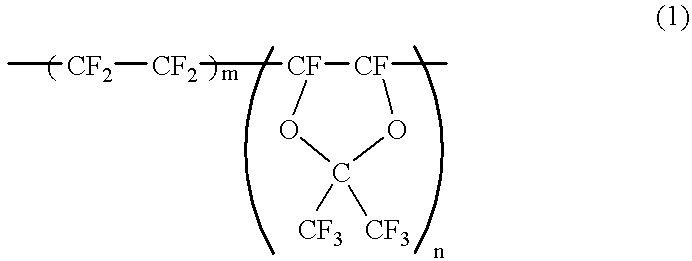Method of manufacturing a semiconductor device
a manufacturing method and semiconductor technology, applied in semiconductor devices, semiconductor/solid-state device details, electrical devices, etc., can solve the problems of increasing both production cost and lead time, enlarge the number of steps, and reduce the effective permittivity of the wiring structure, so as to achieve the effect of reducing the number of steps
- Summary
- Abstract
- Description
- Claims
- Application Information
AI Technical Summary
Benefits of technology
Problems solved by technology
Method used
Image
Examples
first embodiment
a method of manufacturing a semiconductor device according to the present invention will be described in conjunction with the sectional views of processing steps shown in FIGS. 2A thru 2F.
As shown in FIG. 2A, a baseplate 11 is, for example, one in which transistors (not shown) are formed on a substrate 51, and in which a wiring line 53 is formed in an inter-layer insulating film 52 covering the substrate 51. A diffusion prevention layer 54 for preventing the diffusion of copper of which the wiring line 53 is made, is formed of, for example, a silicon nitride film on the inter-layer insulating film 52.
The baseplate 11 is overlaid with an inter-layer insulating film 12 to a thickness of, for example, 800 [nm] by employing, for example, any of organic polymers which are generically named "polyaryl ether". The polyaryl ether includes, for example, "FLARE" produced by AlliedSignal Inc., "SiLK" produced by The Dow Chemical Company, and "VELOX" produced by Schuhmacher GmbH. Alternatively, ...
PUM
| Property | Measurement | Unit |
|---|---|---|
| thickness | aaaaa | aaaaa |
| thickness | aaaaa | aaaaa |
| thick | aaaaa | aaaaa |
Abstract
Description
Claims
Application Information
 Login to View More
Login to View More - R&D
- Intellectual Property
- Life Sciences
- Materials
- Tech Scout
- Unparalleled Data Quality
- Higher Quality Content
- 60% Fewer Hallucinations
Browse by: Latest US Patents, China's latest patents, Technical Efficacy Thesaurus, Application Domain, Technology Topic, Popular Technical Reports.
© 2025 PatSnap. All rights reserved.Legal|Privacy policy|Modern Slavery Act Transparency Statement|Sitemap|About US| Contact US: help@patsnap.com



